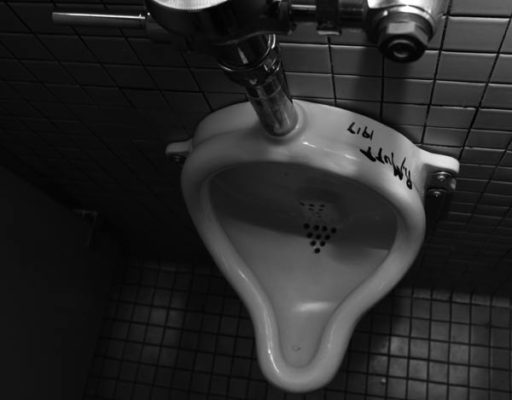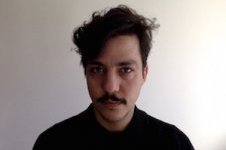Search
To search for an exact match, type the word or phrase you want in quotation marks.
A*DESK has been offering since 2002 contents about criticism and contemporary art. A*DESK has become consolidated thanks to all those who have believed in the project, all those who have followed us, debating, participating and collaborating. Many people have collaborated with A*DESK, and continue to do so. Their efforts, knowledge and belief in the project are what make it grow internationally. At A*DESK we have also generated work for over one hundred professionals in culture, from small collaborations with reviews and classes, to more prolonged and intense collaborations.
At A*DESK we believe in the need for free and universal access to culture and knowledge. We want to carry on being independent, remaining open to more ideas and opinions. If you believe in A*DESK, we need your backing to be able to continue. You can now participate in the project by supporting it. You can choose how much you want to contribute to the project.
You can decide how much you want to bring to the project.

The definition of the world of art based on individuals – habitually male – who generate works that become products of consumption has been called into question in the global crisis. The need for action and social response has lead Tania Bruguera to propose the beauty of the useful, to endeavour to overcome barriers, distances and comfortable positions, with the aim of posing questions that are difficult to answer.
Allan Kaprow said that Non-art is more of an art than Art art. That the lunar module surpasses any contemporary sculptural effort, and that as such, the artist has to un-artist himself in order to flow between art and life. Something similar is happening in Queens with the Immigrant Movement International, Tania Bruguera is the initiator of a project that aims to eliminate the spectator and redefine the relations of power, between citizens and the market.
The project arises out of the support of Creative Time and the Queens Art Museum, and is living its first phase in Corona Park, a predominantly Latino district within the amalgam of origins in this part of New York. The space, at street level, acts as a community centre, where free sessions are organised with lawyers, with classes in English, drawing and video. Bruguera lives in the same zone, sharing her life with the illegal immigrants, surviving on a minimum wage.
In 2010 two Museums filled their space with two proposals that for some signified the enthronement of the relational aesthetic in the United States. While Marina Abramovic sat in the Atrium of MoMA gazing fixedly during three months at more than 1,400 people, in the spiral of the Guggenheim people strolled around, discussing progress with the interpreters of Tino Sehgal. Both situations constituted an example of how to use all dimensions of the museum and at the same time involve the public in the evolution of the piece, generating experience.
The redefinition of the spectator reveals according to Jacques Rancière a process of emancipation. The spectator stops being a spectator to become a storyteller, activating in this way not only his participation in the present, but also in the human recording process par excellence: memory.
The public becomes the protagonist of the art, being the ones who direct and digest their involvement. However the role of the artist in these pieces was left reinforced. In Abramovic’s exercise of astonishment, she is the energy channel through which we must reflect upon our interior. In the organic civic spiral, Sehgal remains omnipresent, the author-scriptwriter of the steps we take.
The distribution of the sensory is for Rancière what defines the form of “being together” the transformation of which is imbibed in the political. The creation of a community of emancipated spectators breaks with the mimetic mediation of theatre to reformulate roles and to delve into the “immediate ethical performance”. For Rancière there exits an ethical shift in our contemporaneity, something fundamental and evident in the social makeup. Bruguera is conscious of it, situating herself as a non-artist and by advancing the concept of “useful art” as a method to “propose solutions for the deficits of reality”, for which she has created the Useful Art Association which nourishes amongst others the Immigrant Movement International
With the same name, in 1969, Eduardo Costa carried out two actions that consisted in: installing the street signs of a series of Manhanttan streets where they didn’t exist in one, and in the second, painting the metro station of Street 42. In April this year, in an event presenting the project to the New York art world, Bruguera defined what interested her, as being not so much the beauty of useful objects, as the beauty of the useful. In line with this formula, the re-entry of Duchamp’s urinal as useful breaks with decades of a self-complacent art aesthetic. At the same time it wallows in the genealogies of the definition of the role of the artist and in that of the object as a codifier of desires.
Claire Bishop responded to the relational aesthetic with the idea that it is not possible to avoid social implications. Thomas Hirschhorn or Santiago Sierra highlight this position when they intervene in the community or in forms of exploitation. In a recent conference for Living as Form, the project that Nato Thompson (Creative Time) has invented as a hub-archive for “socially committed art”, Bishop highlighted the need to find a way evaluating this type of social practices. Is it necessary to trace its effects on those who participate, and as such be assured that the proposed social change reaches a certain destination? Last June, in an event at the Kitchen, that formed part of the exhibition organised by the curators of the Whitney Program from this year, Bruguera proposed the signing of a document, where the undersigned committed themselves to defend and/or act against anyone who made use of an exclusivist discourse against immigrants. After a month, the signatories received a call to remind them of their commitment, a few months later they received at their home a document accrediting the respect given. Ouch! Who in Europe can imagine signing a commitment to not offend and to respect immigration?
Continuing the narrative of Empire, Hardt and Negri identify with the masses and their process of taking control, as the subject and object of globalisation. The migrant being responds to needs of modes of production, and as such a key element, for which as yet the corresponding political entity has not been found. “Papers for everyone” resounds in the project of Bruguera, that also aims to define a political identity for those who don’t have one, or what is more, to redefine the concept of citizenship in accord with the movement of capital, goods and information.
The social ecology that Bruguera coordinates, finds itself in an intermediate place, beyond the circuits of contemporary art, half way between political act and artistic intervention. So how does one participate or experience this continued performance? The answer is something akin to “You have to come and be part of this”. A comfortable position doesn’t exist, given the circumstances of the legal, working and personal conditions there aren’t proposals to sublimate the situation. The space of the movement acts as a generator of dialogues, as a support network, as a collective action where the work of the activist-artist can only be to act-archive (participation and memory).
Once this phase of the project ends in December, Bruguera proposes an expansion, any person or collective will be able to establish their own space of the Movement, in any corner of the planet, its not about franchises but about opening creativity as a collective form of social change. She mentions as a reference “shared creativity” the project of Parreno and Huyghe, Annlee (the Japanese animation that passed from hand to hand being intervened, re-contextualised and reinterpreted.).
The dissolution of art and the democratisation of art practices, don’t just intervene within the long discourse of art-life or the redefinitions of the artist, but also form part of the need to rethink the articulation of the political-economic situation on a human level. A feeling that is an accord with the very plurality and horizontality of these movements that are rocking the squares of the world. Mass action must transform the forms of action citizens take towards the construction of a global government. An infinite project, that involves assuming a change in the art system. The individuality with which art of the capitalist era has been dressed up is outdated in this context. On the 18 December, on the occasion of the International Day of the Migrant, a call has been made for artists from all over the globe to propose actions or to continue proposed actions. In line with creating world calls, pushes the local and the global towards a reaction where new forms of action in the political and artistic are questioned, investigated and experienced. At the same time these circumstances oblige us to rethink the ways in which we write about art. Undoubtedly this text could have begun in another way:
Around 11 million illegal immigrants live in the United States (70% of Latin-American descent), after four years they are still waiting for the regulation promised by Obama. The so-called Dream Act has run aground in the predominantly Republican Congress. Powers that be, such as the Tea Party (32% in Congress), govern the minds of this country, marking the lines of debate and feeding the fears of a southern invasion. They are behind the laws of Arizona and Alabama, which criminalize the immigrant for the condition of being a migrant, while at the same time restricting access to health and education, a threat to the whole of the young population. The ideological barrier also supposes an economic barrier, more than 40% of the representatives of Congress and 66% of senators are millionaires, and a racial one, of the 435 members of Congress, 361 are white, of the 100 senators 96. How many with Hispanic domestic workers or Asian gardeners?

Xavier Acarín is fascinated with experience as the driving force of contemporary culture. He has worked in art centres and cultural organizations both in Barcelona and New York, focussing in particular on performance and installation.
"A desk is a dangerous place from which to watch the world" (John Le Carré)